Toronto Travel Guide
Toronto is a different city in every season. With weather as varied as its population, it is a fascinatingly multi-faceted destination. Though culturally rich and artistic, it is quintessentially Canadian in its politeness.
A holiday in Toronto provides non-stop adventure for tourists, with its distinct seasons and neighbourhoods each offering something different. Visitors truly are spoiled for choice in a city that offers summer cultural festivals along the Harbourfront, the delightful gaudiness of the Yonge Street strip, quaint Victorian houses in Cabbagetown, heart-warming meals in Little Italy, and skating on the numerous outdoor rinks in winter.
In the warm months, the city's nightlife buzzes with energy. That said, bold travellers can find quality night-time entertainment in winter too. Serious shopaholics will find endless shopping opportunities in Toronto. History buffs will find interesting museums, and art lovers will relish the many galleries and creative festivals. Kids also have an exceptional menu of activities to choose from, with plenty of family attractions on offer.
Best time to visit Toronto
The best time to visit Toronto is during the summer months (June to August). The weather is pleasant for exploring on foot, and the city comes alive with outdoor events. Winters in Toronto (December to February) are bitterly cold. But, if visitors choose to explore Toronto in the chilly months, the underground shopping malls will provide plenty of entertainment away from the elements. The most beautiful season in Toronto is autumn, when the fall foliage is glorious.
What to see in Toronto
-Take a tour of Casa Loma, Toronto's incongruous but intriguing medieval castle.
-See rare and wonderful animals at the world-class Toronto Zoo.
-Admire spectacular views from the lofty CN Tower.
-View the collection of the Museum of Contemporary Art, full of the weird and wonderful.
What to do in Toronto
-Make the kids squeal with excitement at Paramount Canada's Wonderland.
-Shop and eat your way around the Distillery Historic District.
-Marvel at the diverse treasures in the Royal Ontario Museum.
-Visit the Harbourfront Centre, the communal heart of Toronto.
Beyond Toronto
Though Canada is an enormous country and the major cities are generally far apart, both Ottawa and Montreal are within reach for a weekend getaway when staying in Toronto. Popular excursions from Toronto include the epic Niagara Falls and Lake Superior.
Getting there
The Toronto Pearson International Airport, or simply Toronto International, is Canada's busiest airport. It is situated 17 miles (28km) northwest of downtown Toronto.
Did you know?
-The coldest temperature ever recorded in Toronto was -24F (-31C), and the highest was 105F (41C).
-There are 52 outdoor skating rinks in Toronto, generally open between December and February.
-More than 21 million people visit Toronto annually.
Things to do in Toronto
Toronto guarantees something for every kind of sightseer, boasting striking natural scenery, charming neighbourhoods and even one of the world's tallest buildings. It has a range of fantastic museums, including the Royal Ontario Museum, the Museum of Contemporary Art, the Canadian Air and Space Museum, the Ontario Science Centre and the Hockey Hall of Fame. There are also numerous art galleries, such as the OCAD Professional Gallery, the Art Gallery of Ontario and the Gardiner Museum of Ceramic Art.
Visitors can go for a stroll in the city's many distinct neighbourhoods, such as Toronto's huge Chinatown, which is home to the city's 350,000 Chinese-Canadian residents. There's also Little Italy, the lively Art and Design District, and Leslieville, with its antique and vintage shops. The funky Queen West has boutiques, art galleries and restaurants, while the harbour and Toronto Islands are perfect places to relax without having to travel far from the city.
Travellers can save money on many of Toronto's attractions by buying a Toronto CityPass online. It provides discounted tickets to places such as the Ontario Science Centre, the CN Tower and the Toronto Zoo.
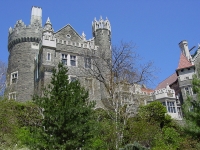
Casa Loma
Casa Loma is the only full-sized castle in North America. Formerly the home of Canadian financier, Sir Henry Pellatt, the massive structure is a wonderland of secret passageways and elaborately decorated rooms. Pallet used his immense personal fortune to build the chateau, though financial troubles meant he could not sustain it. Today, the City of Toronto owns the castle and welcomes a daily influx of guests. Visitors enjoy touring the authentically furnished rooms and splendid gardens, and drinking in the stunning views of Toronto from one of the castle's towers.
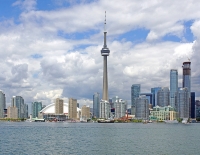
CN Tower
Standing 1,815ft (553m) high, Toronto's CN Tower was the world's tallest building until 2007. Today, it remains a renowned architectural masterpiece and is arguably Canada's most iconic landmark. One of the tower's top attractions is the award-winning revolving 360 Restaurant, which offers guests breathtaking panoramic views of the city, as well as delectable dishes created with the finest Canadian ingredients. Another drawcard is EdgeWalk. At 1,168ft (356m) above ground, it is the world's highest hands-free external walk and a must for thrill seekers.
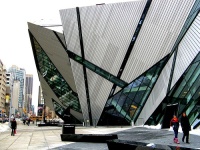
Royal Ontario Museum
The Royal Ontario Museum treats visitors to displays of art, culture and nature from around the globe and across the ages. It ranks as one of North America's premier cultural institutions, and is Canada's largest and most comprehensive museum. Its 40 galleries and exhibition spaces house 13 million artworks, cultural objects and natural history specimens, including dinosaurs, galleries of Chinese art, a bat cave, a gem and gold room, exhibits on Ancient Egypt and Nubia, and the Samuel European Galleries. Visitors will not be disappointed.

Toronto Zoo
The Toronto Zoo is one of the largest zoos in the world and has a big focus on conservation, with more than six miles (10km) of walking trails spread over 700 acres. More 5,000 animals and over 450 species call it home. Visitors will enjoy touring the zoo's seven geographic regions and encountering animals that are native to them. Favourites include hippos, lemurs, otters, gorillas, bears, Giant Pandas, snow leopards, lions, penguins and cheetahs. Award-winning exhibits await the entire family, as do many seasonal activities. The zoo's interactive wildlife experience is especially popular with kids.
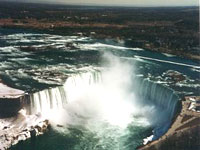
Niagara Falls
Straddling the Canadian-United States border between Ontario and New York, the awesome Niagara Falls attracts millions of tourists every year. The visit makes for a spectacular day trip from Toronto with plenty of action and activities on the Niagara Peninsula. Apart from marvelling at one of the tallest waterfalls in the world, perhaps from a spray-filled boat tour or from a magnificent perch along the cliffs, visitors can enjoy wine tasting, spectacular helicopter flips above the thundering falls, and even skydiving.
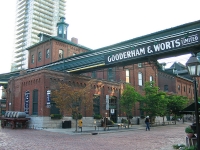
Distillery Historic District
The Distillery Historic District is a much-loved centre for arts, culture, food and entertainment in Toronto. Said to contain the finest collection of Victorian-era industrial architecture in North America, it is indeed a worthy national historic site, and certainly worth a visit.
The district had its beginnings in 1832 and eventually became the largest distillery in the British Empire. It assumed its current role as an arts and culture centre during the 1990s, doubling as one of Canada's most popular film locations. As of 2003, it has been a pedestrian-only village dedicated to the arts. Anyone visiting Toronto should explore the district's many art galleries, artisan boutiques and restaurants, and make sure they book tickets for one of the many festivals and special events held here.
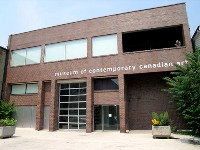
Museum of Contemporary Art Toronto Canada
The Museum of Contemporary Art Toronto Canada (MOCA) aims to exhibit, research, collect and promote innovative art by Canadian and international artists whose works tackle the most relevant issues of our times. Formerly the Museum of Contemporary Canadian Art, the institution has been praised for its incisive, artist-centric approach to its programmes, and its friendly visitor experience. The MOCA is very much a hub for creative exchange and is definitely worth a visit.
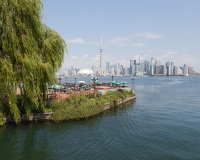
Toronto Islands
The Toronto Islands are only a short ferry ride from the mainland, and provide a peaceful green refuge from the hubbub of the city. Visitors can enjoy a world of tree-filled picnic spots, pedestrian streets, quaint old cottages and beachfront attractions. Paths, bridges and boardwalks connect Toronto Island's three major islands: Centre, Ward's and Algonquin. Short walks or bike rides separate visitors from four sandy beaches named Centre Island Beach, Gibraltar Point Beach, Hanlan's Point Beach and Ward's Island Beach. Centre Island is usually a hit with kids, who relish its huge picnic areas, bike paths and maze. It even has an amusement park, a petting zoo and picturesque swan boats for younger children.
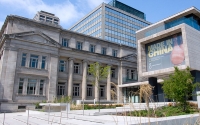
Gardiner Museum of Ceramics
Housed in an award-winning piece of architecture, the Gardiner Museum of Ceramics showcases a craft that has existed for centuries. With earthenware of all different shapes and sizes from the ancient Americas, China, Japan, the Italian Renaissance and more, a tour through the museum will shape visitors' understanding of the ceramic process and its place in world history. The museum hosts classes for both kids and adults, and the accompanying Clay restaurant provides the finest of seasonal produce to complete a busy day browsing the museum.
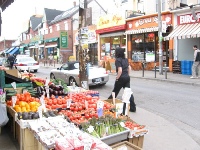
Kensington Market
Kensington Market embodies Toronto's multicultural society. Since the 1960s, immigrants from Eastern Europe, China and the Caribbean have injected their customs into the market, creating an area that is a model of open-mindedness. Today, this national historic site remains one of Toronto's oldest, most diverse and liveliest neighbourhoods, containing an eclectic mix of cafes, restaurants, vintage stores, bars and speciality food shops where nobody is really foreign.
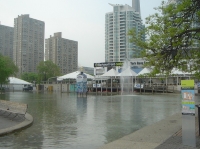
Harbourfront Centre
The Harbourfront Centre remains at the heart of what's current and creative in Toronto. The innovative non-profit cultural organisation has been around for more than 40 years, and specialises in creating events and activities that charm and entertain a diverse public. Locals gather at the centre's distinctive waterfront venues for some weekend gallery hopping, biking and concerts. Visitors also enjoy strolling along the promenade, indulging in theatrical performances and browsing craft boutiques, or they head to Queen's Quay Centre for some superb retail therapy. Year-round features at this urban playground include film, dance, theatre, music, kids shows and marine events.
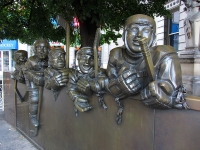
Hockey Hall of Fame
Avid ice hockey fans should make a point of it to visit Toronto's Hockey Hall of Fame. Within this shrine to Canada's favourite pastime, visitors can learn about the history of the game through memorabilia from every era, hockey artefacts from around the world, themed exhibits, multimedia stations and images of great moments in hockey history. Iconic players' gear, skates and sticks are also on display. Visitors usually relish having hands-on access to the Stanley Cup, and trying out state-of-the-art games that challenge shooting and goalkeeping skills.
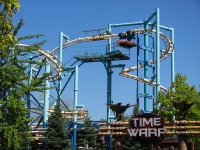
Canada's Wonderland
Boasting more than 200 attractions, including Splash Works and a huge variety of roller coasters, Canada's Wonderland is deservedly the country's favourite theme park. Its inviting array of rides includes carousels, train rides and the Time Warp â€' Canada's only flying roller coaster. The park also has lots of shopping and dining options. The sheer variety of rides and amusements here ensure that everyone will have a good time regardless of age, making it a must for the entire family.
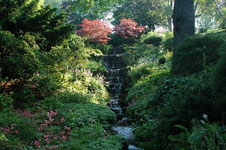
High Park
Besides being Toronto's largest public park, High Park is also one of the city's most important natural areas. Visitors will encounter woodland, wetlands, a beautiful lakefront, prairie habitats and a preserved slice of the black-oak savanna ecosystem that once covered most of southern Ontario. It all makes for an idyllic setting in which to enjoy the park's playgrounds, zoo, dog park, hiking trails, greenhouses, picnic areas, eateries and sporting facilities. Parking is convenient and public-transport access is easy. All said, High Park makes for a fun family day out.
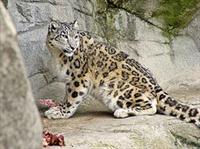
Jungle Cat World Wildlife Park
Jungle Cat World Wildlife Park is one of Ontario's most popular tourist attractions. Just 45 minutes east of Toronto, the park is home to a diverse collection of mammals, such as wolves, skunks, lemurs and chimpanzees. That said, its collection of big cats is what makes the park truly special. When it opened in 1985, the park's purpose was primarily recreational. These days, it has taken on a more pronounced environmental-education role. Its chief enterprises include housing rare and endangered cats, and running a variety of fun, kid-friendly programmes. The goal is to educate visitors about the dire need to protect snow leopards, Siberian tigers and the other magnificent animals that sanctuary here.
Things to do with kids in Toronto
Toronto has loads of places for kids to play and even learn new things, ensuring they'll be stimulated for days on end.
Canada's Wonderland is the country's premier theme park, with families relishing the mix of rides and entertainment. Travellers looking for kid-friendly ways to enjoy the outdoors should head out to High Park and Centre Island's Centreville Amusement Park.
Parents can add a touch of learning to family holidays in Toronto by visiting the Toronto Zoo, the Jungle Cat World Wildlife Park or the Ontario Science Centre. Children might also have fun when climbing the CN Tower, with views from one of the tallest buildings in the world sure to be a thrilling experience.

Toronto Zoo
The Toronto Zoo is one of the largest zoos in the world and has a big focus on conservation, with more than six miles (10km) of walking trails spread over 700 acres. More 5,000 animals and over 450 species call it home. Visitors will enjoy touring the zoo's seven geographic regions and encountering animals that are native to them. Favourites include hippos, lemurs, otters, gorillas, bears, Giant Pandas, snow leopards, lions, penguins and cheetahs. Award-winning exhibits await the entire family, as do many seasonal activities. The zoo's interactive wildlife experience is especially popular with kids.

Canada's Wonderland
Boasting more than 200 attractions, including Splash Works and a huge variety of roller coasters, Canada's Wonderland is deservedly the country's favourite theme park. Its inviting array of rides includes carousels, train rides and the Time Warp â€' Canada's only flying roller coaster. The park also has lots of shopping and dining options. The sheer variety of rides and amusements here ensure that everyone will have a good time regardless of age, making it a must for the entire family.

High Park
Besides being Toronto's largest public park, High Park is also one of the city's most important natural areas. Visitors will encounter woodland, wetlands, a beautiful lakefront, prairie habitats and a preserved slice of the black-oak savanna ecosystem that once covered most of southern Ontario. It all makes for an idyllic setting in which to enjoy the park's playgrounds, zoo, dog park, hiking trails, greenhouses, picnic areas, eateries and sporting facilities. Parking is convenient and public-transport access is easy. All said, High Park makes for a fun family day out.
Eating Out
Toronto's restaurant scene is extremely diverse and diners can expect a bevy of culinary adventures. As a starting point, travellers should remember that certain cuisines cluster in distinct areas.
College Street, better known as Little Italy, is naturally home to the city's best Italian restaurants and trattoria. Danforth serves up Greek food, while authentic Chinese establishments are abundant in Chinatown. Visitors should also check out King Street West for excellent Indian, Japanese and sushi eateries.
Otherwise, Lai Wah Heen, Bangkok Garden, 360 and Canoe are among the titans of Toronto's restaurant scene and definitely worth visiting. Tips of 15 to 20 percent are expected for good service.
Shopping
Toronto is undoubtedly Canada's shopping capital, offering top international labels and enterprising local brands. Its most famous mall is the Eaton Centre, which brims with brand stores, restaurants and entertainment all under one roof.
But visitors are far better off seeking out local stores that are unique to the city. Lovers of haute couture should try Canadian labels such as Ross Mayer and Linda Lundstrom. St Lawrence Market has an amazing array of local arts and crafts, and excellent food. Kensington Market is the place to go for vintage clothing and other eccentric paraphernalia, while the Heritage Antique Market has an amazing selection of retro items.
Queen West, which has the best that young and trendy Toronto has to offer, is an essential stroll for serious shoppers. Bathurst Street has small, independent art galleries, where discerning buyers can pick up a souvenir or two, while Yorkville, along Bloor Street, is the city's most exclusive retail district and is home to boutiques and jewellers from Milan, Paris and London.
For travellers on the hunt for mementos, the obvious choices are some good Toronto maple syrup or gifts emblazoned with Mounties or maple leafs. Alternative choices would be Native American art, dream catchers or moccasins.
Nightlife
From swanky clubs to cosy bars, the nightlife in Toronto has something for everyone. Visitors can expect an action-packed cosmopolitan vibe in this big and energetic city. Little Italy has a number of trattorias that double as bars, while Greektown has its own flair and party atmosphere. Broadly speaking, bars and pubs close around 2am, while dance clubs stay open till dawn. Late-night buses pick up afterhours commuters when the subway shuts down.
Clubs come and go fairly quickly in Toronto, so visitors should check out local nightlife guides for the hottest spots. The legal drinking age in Ontario is 19 and is strictly enforced at most venues. Dress codes tend to be relaxed, but many will refuse entry for people wearing jeans or trainers.
Getting Around
Public transport in Toronto is fast, safe and reliable. Known as the Toronto Transit Commission, it consists of an integrated system of subways, buses and streetcars that reach every part of the city. The subway has four lines and is easy to use, and there are bus and streetcar stations next to every major stop that take over where the subway leaves off.
Fares are standard and a single fare will take commuters anywhere on a single trip. Commuters can use tokens to avoid the hassle of having to pay with exact change but can also use PRESTO cards with preloaded money. To freely change from one form of transport to another, commuters should get a transfer slip when paying for the fare.
The subway runs from 6am-2.00am, while buses and streetcars operate from about 6am-12.30am. Both start at 8am on Sundays. The Blue Night Network services main street routes after 1.30am. Taxis are always available and ferries travel to the Toronto Islands. Driving a hired car is not recommended due to traffic congestion and expensive parking.
Toronto Climate and Weather
Lake Ontario takes some of the edge off Toronto's humid continental climate. Summer (June to August) tends to be hot and very humid, while winter (December to February) is severe with heavy snowfall. The average maximum temperature in January is 28°F (-2°C), while the average maximum temperature in July is 80°F (27°C). Rainfall tends to occur throughout the year, but summer, though the sunniest season, is also usually the wettest. Autumn is perhaps the best time to travel to Toronto, as temperatures are less extreme than in summer or winter, with mild days and cool nights.
Canada travel info
Electricity
Electrical current is 120 volts, 60Hz. American-style flat two-pin plugs and a plug with a third round grounding pin are standard.
Language
The official languages are English and French (spoken predominantly in Quebec).
Money
The currency used is the Canadian dollar (CAD). Banks and bureaux de change will change cash, as will some hotels. Major credit cards are widely accepted and ATMs are widespread. US dollars are widely accepted.
Tipping
A tip of around 15 percent is standard in restaurants, and hairdressers and taxi drivers are usually tipped at the same rate. Bellhops, doormen, porters, and similar service providers at hotels, airports, and stations are generally paid at the customer's discretion.
Health
Travellers should be up to date with your COVID-19 vaccines before traveling to Canada, and should consider taking routine vaccines as a standard precaution. Medical care is excellent but expensive, so medical insurance is advised.
Safety
While most visits to Canada are trouble-free, the country does share the common international risk of terrorism. The crime rate is low but travellers are advised to take sensible precautions to safeguard their belongings, as they would anywhere. Parts of Canada are prone to tornadoes between May and September.
Local customs
Rowdiness and loud speech are inappropriate except under special circumstances or in places such as bars, as Canadians tend to be soft spoken, patient and almost apologetic in their public behaviour. They are generally tolerant of the complex network of cultural differences in public behaviour, particularly in cities where such diversity is more common place. Recreational cannabis is legally available throughout Canada, though local laws can vary depending on the province or territory travellers are visiting.
Doing business
Vancouver, Toronto, Calgary, and Montreal are the main business centres, and English is the language of business except in French-speaking Quebec, where all written material and business cards should be in French. Business cards are not traditionally exchanged during an initial meeting, but at some appropriate time thereafter; it is best to wait for the host to offer theirs first.
A firm handshake is used by way of greeting and punctuality should be taken seriously for meetings. Canadians dress conservatively and smartly for business and suits are the norm. Gifts can be given in conclusion to celebrate a deal, but should be understated; taking someone out for a meal is a popular way to conclude business dealings.
Canadians are reserved and frown on emotional outbursts. Business is based on facts and figures rather than relationships, so it is best to be as prepared as possible for meetings. Hours of business are usually 9am to 5pm, Monday to Friday.
Duty free
Travellers to Canada are allowed to enter the country with the following items without incurring custom duties: gifts to the value of C$60 per recipient (excluding advertising material, tobacco and alcoholic beverages); 200 cigarettes, 50 cigars or cigarillos and 200g of tobacco or 200 tobacco sticks; 1.14 litres of liquor or wine or 24 x 355ml bottles or cans of beer or ale. There are strict regulations governing the import of the following: explosives, endangered animal and plant species, items of heritage, fresh foodstuffs and weapons.
Communications
The international access code for Canada is +1. The outgoing code is 011 followed by the relevant country code. The outgoing code is not necessary for calls to the US and the Caribbean. Hotels, cafes and restaurants offering free WiFi are widely available. As international roaming costs can be high, purchasing a local prepaid SIM card can be a cheaper option.
Passport & Visa
All visitors must hold a valid passport, and it's recommended that passports always be valid for six months after the intended period of travel. Visitors are required to hold onward or return tickets, all documents needed for the next destination and sufficient funds to cover the period of intended stay.
Travellers from most visa-exempt countries arriving in Canada by air need to fill in an Electronic Travel Authorisation (eTA) form online prior to visiting Canada. This requirement is applicable to all but U.S citizens and travellers with a valid Canadian visa. Canadian citizens, including dual citizens, and Canadian permanent residents cannot apply for an eTA. As part of the Western Hemisphere Travel Initiative (WHTI), all travellers travelling between the United States and Canada, Mexico, Bermuda, and the Caribbean region are required to present a passport or other valid travel documents to enter or re-enter the United States. If departing from the USA a valid passport will be required by immigration authorities.
Entry requirements
US travellers should have a valid passport if departing from the USA. Other proof of citizenship is accepted in the form of a birth certificate, a US certificate of citizenship, a US certificate of naturalisation, or a NEXUS card. A visa is not required for a stay of up to six months.
UK nationals must have a passport valid for the period of intended stay. A visa is not required for a stay of up to six months, though UK travellers must have Electronic Travel Authorisation (eTA).
Australians must hold passports valid for period of intended stay. Nationals of Australia with an Electronic Travel Authorisation (eTA) are visa exempt for a maximum stay of 6 months.
South African nationals must be in possession of a passport valid for the period of intended stay. A visa is required. South African temporary passports are not recognised. Passports, identity or travel documents of Bophuthatswana, Ciskei, Transkei and Venda are not accepted.
Irish nationals must hold a passport valid for the period of intended stay. A visa is not required for stays of up to six months. However, the individual must have an Electronic Travel Authorisation (eTA).
New Zealanders require a passport valid for the period of the intended stay. No visa is required for stays of up to 6 months. However, the traveller requires an Electronic Travel Authorisation (eTA).
Useful contacts
Canadian Tourism Commission, Vancouver: +1 604 638 8300 or www.travelcanada.ca
911 (all emergencies)


